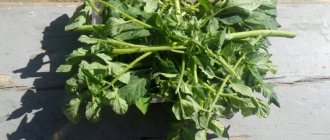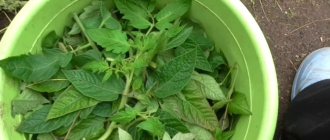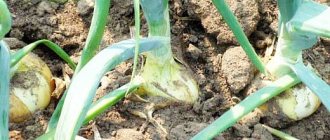Types of cutworms dangerous for tomatoes
Cutworms (Noctuidae) or noctules are one of the largest families of lepidopteran insects. According to the latest data, it includes more than 1,000 genera and about 12,000 species. Information that the family contains 36,000 species is outdated. Noctuid moths are excluded. There are 24,000 species in a separate family, Erebidae.
Noctuids are distributed throughout the globe - from the Arctic to Africa. More than 1,500 species can be found in Russia.
Cutworms are medium-sized butterflies with a round head and two pairs of wings. They fold along the body in a horizontal plane, are distinguished by their triangular shape and faded colors.
The front wings are decorated with a characteristic cutworm pattern consisting of three fields called bands. The spots are not randomly located, but form a system; three of them are usually called the main ones and are described when defining the taxon: round, wedge-shaped and kidney-shaped. The pattern is clearly visible in the photo. In different scoops, it allows for deviations and variations that do not fit into the general scheme.
The pest's lifestyle is predominantly evening and nocturnal. For plants, including tomatoes, it is not butterflies that pose a danger, but caterpillars. They go through several molts and have 5-6 instars.
When they are at different stages of development, the harmfulness of the caterpillars changes. Pupation occurs in the ground, at a depth of 5-7 cm, in some species in spring and summer - on leaves and stems.
Most cutworms are polyphagous, meaning they can feed on different crops. Some species are recognized as dangerous quarantine pests. It is with them that gardeners are forced to fight for the harvest. The only good thing is that the measures to combat the fall armyworm on tomatoes are the same, regardless of the type.
Cotton bollworm
Helicoverpa armigera is a polyphagous pest. It is an inconspicuous butterfly with a wingspan of 3-4 cm in the front wings, bordered by a brown stripe. Their main color is gray-yellow, with reddish, green and pinkish impurities. In the center is a dark mark that looks like a sickle. Round and kidney-shaped spots are gray, decorated with fuzzy transverse lines.
Caterpillars 3.5-4 cm long are covered with small growths, called spines in biology, and are distinguished by three dark longitudinal stripes on top and one yellow stripe on the bottom. The color of the body is variable, it can be:
- white;
- yellow;
- brown;
- green;
- black.
In Russia, the bollworm feeds on tomatoes and 120 other plant species. In the first period, the caterpillar gnaws on leaves, then moves into the stems and eats tomatoes.
The temperature favorable for the development of the pest is from 22 to 28° C, the minimum is 18° C. Fertility is 300-2700 eggs. In the middle zone, 1 generation manages to appear, in the south - 2-3. The complete development cycle from egg to mature butterfly depends on temperature and usually lasts 30-35 days. Of these, 13-22 are larvae (caterpillars).
It is believed that cutworms on tomatoes begin to pose a problem if their number exceeds 10-12 larvae or 20 eggs per 100 bushes. This indicator is usually called the threshold of harmfulness. The pupae overwinter.
Scoop Gamma
Phytometra gumma is distributed throughout the European part of Russia: in the Caucasus, Far East, Central Asia and Western Siberia. It affects 100 species of cultivated plants, including tomatoes.
Wingspan – 4-4.8 cm. Color – from gray to brown, with a purple tint. The name is derived from the marking, shaped like the Greek letter γ (gamma), silvery in color, located on the front pair of wings. The kidney-shaped and round spots are bordered.
Caterpillars that parasitize tomatoes are green, with two fuzzy, sinuous white stripes on their backs. Spiracles are yellow. Length 2.4-4 cm.
The gamma cutworm differs from other species by black spots on the sides of its head.
The larva goes through 5 instars. At the initial stages it requires high humidity (90-100%). It belongs to the leaf-eating type - it eats the plates of tomatoes and other crops, leaving only large veins. Then it becomes able to gnaw through the flowers and fruits of tomatoes.
The optimal temperature for life is 20-25° C, the minimum is 17° C. The full development cycle is 25-45 days, of which 16-25 are at the larval stage, when the caterpillars actively eat tomatoes. In the north it gives 1 generation, in the southern regions - 3, sometimes 4.
In summer it pupates on the tops or under the leaves of plants. With the onset of cold weather - in the ground. Not only pupae, which can withstand temperatures down to -18° C, overwinter, but also butterflies and caterpillars.
exclamation scoop
Agrotis exclamationis is a gnawing cutworm, a broad polyphagous species. It lives throughout the European part up to the Arctic Circle. Found in the Far East, the Caucasus, Kamchatka, and Siberia. It affects 75 plant species, including tomatoes. In the North it produces 1 generation, in the southern regions - 2.
A butterfly with a wingspan of 3.2-4.5 mm. Color ranges from gray with a yellow tint to brown. Spots:
- kidney-shaped – black-brown;
- round – a little lighter;
- wedge-shaped is a narrow black stripe.
The caterpillars are grayish-brown or faded yellow, 3.3-5 cm long, covered with pimples. The head is red. Damages tomato stems at ground level. Adult caterpillars overwinter and can withstand low temperatures well even in the North. In the spring they eat off and only then pupate.
Fall armyworm
Agrotis segetum is a cutting armyworm, a polyphagous pest of tomatoes and 150 other crops. The range in Russia covers the entire European part, Southern Siberia, Transcaucasia, and the Far East. In the North, only 1 generation develops, as you move south - up to 4. Favorable temperature - from 16 to 30 ° C, minimum - 10 ° C.
The wingspan is 3-4.6 cm. The color of the front wings is rarely purely gray, usually with an admixture of brown. The transverse stripes are clear. Spots:
- wedge-shaped - small, gray, with a black outline;
- round - in the shape of a disk or oval, light, with a thin charcoal border;
- kidney-shaped with regular outlines, large, dark gray in the middle, much lighter on the periphery, with black edging.
Caterpillars are 4-5 cm long, brown-gray, glossy. The head is red, there are small pimples and dark longitudinal stripes on the body.
At the 1st-2nd stage of development, the larvae of the winter cutworm usually feed on weeds, since they are characterized by an early appearance - the cultivated plants have not yet been planted. They can damage seeds and eat up seedlings of early varieties of tomatoes, other vegetables and herbs.
Caterpillars, starting from the third instar, rise higher and gnaw leaves, leaving only large veins. The fruits, including tomatoes, are not touched. The caterpillars feed on leaves until October, then burrow into the ground to a depth of 10 to 25 cm.
The full development cycle is usually 50-70 days. The duration of the larval (caterpillar) stage depends on temperature and region, lasting from 24 to 36 days. In the North, winter cutworms travel from the ovipositor to the adult individual over a much longer period of time. Sometimes the caterpillar stage there lasts up to 100 days.
Adult larvae overwinter and can withstand -11, and at low humidity -18° C. Young caterpillars in the south survive at -5° C.
Cutworm
Lacanobia oleracea, synonym – Lettuce armyworm, is a polyphagous pest of agricultural crops that also affects tomatoes. Distribution in Russia - the entire European part, the Caucasus, Transcaucasia, Siberia, the Urals, the Far East.
The wingspan is 3.3-4.2 cm, the color is brown with a reddish tint. Spots: kidney-shaped - orange or yellow, round - dark, both surrounded by a white rim. Fertility – 400-1500 eggs.
The caterpillars are covered with spots: small light and large black, bristly. Body color can be green, brown with a yellow or red tint. The head and spiracles are yellow.
They damage the leaves of ornamental and agricultural plants, including tomatoes.
If representatives of the Chenopodiaceae or Asteraceae families grow near the beds or greenhouses, the garden cutworm will pay attention primarily to them. And then he will move to the garden.
The pest lives in the larval stage for 30-40 days. The pupae overwinter in the ground. In the North, 1 generation develops, in warm climates - 2.
Scoop Karadrina
Spodoptera exigua has a second name - tomato cutworm. A polyphagous pest, its food list includes 185 crops, including tomatoes. In Russia, the species' range extends across southern Siberia and Europe. The pest is found in the Trans-Urals, Transcaucasia, and the Far East.
Butterflies are brown-gray in color, with a wingspan of 2.3-2.4 cm. The round spot seems to be covered with fresh rust, the kidney-shaped spot is dull brown. Lays eggs in groups of 300 or more. Gives up to 3 generations. Summer – from May to October.
The caterpillars are green to brown, 2.5-3 cm long. On the back there are several thin lines covered with hairs, on the sides there are wide dark stripes on top, yellow underneath. There are white spots near the spiracles. It lives 14-25 days before turning into a pupa.
The Karadrina armyworm loves tomatoes and other nightshade crops. At the initial stages of development, the caterpillars bore holes and skeletonize the leaves. Tomato fruits and flowers are affected by adult larvae when they spread strongly. The pupae overwinter.
In addition to the listed species, cabbage and clover armyworms can parasitize tomatoes. But if there is another food supply, they prefer more familiar crops. On tomatoes they are destroyed in the same way as other species.
Characteristic
As you can see in the photo, the potato cutworm (imago) is a butterfly with grayish-brown fore wings, the span of which can be from 28 to 40 mm. They show dark brown transverse lines, spots and a wide border running along the edge. The hind wings are yellow-pink or grayish-yellow, with a dark stripe in the apical third. There are a pair of long antennae on the head, they are wide at the base and taper towards the tips.
The potato cutworm larva is a small caterpillar whose body can range in color from light yellow to red-brown or gray-brown. A dark stripe runs along the back. The head is a darker shade, without spots or lines. The chest shield is brown, the supporting setae are red-brown, the spiracles are black. The body length of the larvae averages from 40 to 45 mm.
The potato cutworm pupa is yellow-brown in color and approximately 18-23 mm long.
The eggs are hemispherical. At first they are painted in a light yellowish color, later their color changes and takes on a pink tint. The egg is small in diameter - up to 0.8 mm, in height - no more than 0.4 mm.
The fertility of female potato cutworms is from 70 to 90 eggs. In August-September, butterflies lay eggs on foliage or on the lower part of the stem of wild food plants, placing eggs in parallel rows. There can be from 20 to 45 eggs in one row. Being in the stage of embryonic development, parasites survive the winter.
On a note! Younger caterpillars can also overwinter in the soil!
With the arrival of stable warmth - around the end of April or the first ten days of May - caterpillars emerge from the eggs, go to the above-ground part of thick-stemmed plants and begin active feeding. Having reached an older age, the larvae descend to the upper layers of the soil, where they pupate. Subsequently, adults emerge from the pupa.
Where does the cutworm come from on tomatoes?
In greenhouses, greenhouses and vegetable gardens, cutworm pupae and caterpillars overwinter in the ground. Suitable conditions in cold climates are created by plant residues that have not been harvested since autumn, warming the soil. Sometimes the armyworm enters the site along with purchased soil, “enriched” with the pest overwintering there.
Coming to the surface, the pest begins to feed on weeds. By the time crops are sown or planted, the cutworm is usually ready to lay eggs.
It is impossible to completely prevent its occurrence even by annual deep digging and disinfection of the soil in the fall. The armyworm flies well and can move from a neighboring area or migrate from afar.
Some species are capable of covering vast distances with air currents. In the Far East you can sometimes even find tropical cutworms. But they do not overwinter there and die at the end of the season.
Step-by-step instruction
The fight against armyworms has a number of characteristic features that need to be taken into account depending on the age of the individuals.
How to fight butterflies?
Adult cutworms lay larvae on plants, which soon begin to devour leaves and young shoots . Basic methods of controlling butterflies:
- Use of pheromone traps. These devices show the gardener and gardener the exact time of appearance of butterflies and, accordingly, caterpillars;
- Fighting butterflies with the help of their natural enemies - bracon and trichogramma;
- Using proven folk recipes;
- Digging up soil in the fall, since cutworms overwinter in the soil;
- Biological products against insects.
The easiest way to protect cabbage from pests: the gnawing cutworm:
How to get rid of armyworm caterpillars?
The fight against armyworm caterpillars has its own characteristics . The main methods include:
- Deep digging of the soil in the spring in order to reduce the number of overwintered armyworms;
- Elimination of weeds - these plants serve as the main basis for feeding the larvae;
- Manual collection of the first larvae and caterpillars;
- Use of folk remedies;
- Use of biological products;
- Treatment of plants with chemical insecticides;
- Autumn digging of soil to destroy individuals that remain for the winter.
Harm of cutworms
The potential fertility of the cutworm is 2 thousand eggs. It is especially unpleasant that some species lay one butterfly per leaf, and one butterfly can infect a huge area. Other cutworms can leave 300 or more eggs on the underside of a tomato leaf blade.
Butterflies do not pose a danger to tomatoes, and even bring some benefit by participating in pollination. The pests are larvae that live quite a long time.
If in the south their development can last 2 weeks, then in the northern regions the caterpillars of the Winter Armyworm sometimes feed for up to 100 days until they pupate.
During the day, the larvae hide under leaves or plant litter, and feed in the evening and at night. Cutworm - crop pests are conventionally divided into three groups:
- leaf-eaters, whose food base is tomato leaves;
- gnawing cutworms damage the roots and lower part of tomato shoots, most belong to the Agrotis subfamily;
- intrastem ones gnaw into soft tissue, live and feed inside the plant until the time comes to pupate.
But it’s not for nothing that moths are called omnivores. Caterpillars in the early stages of development usually skeletonize and gnaw tomato leaves. Then they may well move onto tomato fruits, damaging them in the area of the stalk.
Gnawing cutworms prefer not to rise high; they feed on flowers and tomatoes if they lie on the ground.
Caterpillars of the first and second groups damage tomato fruits only when they spread strongly. If the beds and greenhouses are treated, their “activity” will, although it will affect fruiting due to inhibition of bush growth, but only a few ovaries will be eaten away.
Sucking pests: aphids, thrips, leafhoppers, whiteflies
These pests are less harmful to tomatoes, but with a high degree of infestation they can cause significant damage. Damaged plants are deformed and their development is impaired. Insects with sucking mouthparts are carriers of viral and mycoplasma diseases, which they spread while feeding. These are various mosaics, jaundice, trunk, etc. Plants infected with such diseases cannot be treated and must be destroyed.
In one season, aphids can produce up to 12 generations.
Protection measures
It is quite difficult to combat these pests, so it is safer to use systemic drugs that penetrate the plant and destroy insects as they feed:
— Confidor v.r.k. – 0.2-0.25 l/ha, Aktara 25 WG – 0.06-0.08 kg/ha.
The most common tomato diseases in the south of Ukraine are: late blight, macrosporiosis, bacterial spot, septoria, alternaria, viral and mycoplasma diseases.
How to detect a pest on tomatoes
Most cutworms begin feeding not at night, but during dusk. The caterpillars are not that small; in the evening they are easily detected by people with good eyesight.
But you can see them on the underside of tomato leaves in the middle of the day. If the bed or tomatoes in the greenhouse are mulched with grass or other plant debris, you need to rake the litter. It is likely that the larvae wait out the daylight hours there.
There should be no talk of weeds. If you do not get rid of them, protecting tomatoes by spraying and other methods will become ineffective.
Butterflies also appear in the evening. If you go out into the garden or visit a greenhouse at dusk, you can see flying pests - their wingspan is quite large.
Scoop eggs are white, yellow, and light green in color. They are clearly visible on leaves, weeds and plant debris, even if deposited one at a time.
It is much worse when it is not the pest that is found, but signs of its activity - gnawed and skeletonized leaves, which only have large veins left, a damaged stem or caterpillars inside the tomatoes.
Signs of appearance
Cutworm butterflies fly at night, so you won't be able to spot them during the day. The pest's caterpillars hide in the ground during the day and begin to eat the tops and fruits of tomatoes only at nightfall. Therefore, detecting the appearance of cutworms in the garden can be quite difficult.
Related article: Planting potatoes with sprouts - complete growing technology
Here are some main signs:
- clusters of white round eggs appear on tomato leaves;
- the appearance of greenish or brown caterpillars on leaves and stems, especially in the evening;
- small holes in the leaves that enlarge over time, leaving only large veins on the leaf;
- damaged buds or fruit ovaries;
- holes with eaten away pulp in tomatoes.
How to treat tomatoes against cutworms
What to do if cutworm appears on tomatoes? This pest is well-known; it can be destroyed using traditional methods or chemicals. Another thing is how to deal with caterpillars. Whether to immediately spray tomatoes with strong preparations, set traps, or save the crop in another way depends on the stage of infection of the crop.
Drugs
The earlier the cutworm is detected on tomatoes, the more gentle control methods can be chosen. Ideally, prevent butterflies from laying eggs. Then you can avoid using chemicals and make do with biological products.
Chemical
To protect tomatoes severely affected by cutworms in greenhouses and open ground, enteric and contact chemicals are used for treatment:
- peritroids;
- organophosphorus compounds;
- quinine synthesis inhibitors;
- neonicotinoids.
For private farms, the following preparations for the fall armyworm on tomatoes are recommended:
- Alatar;
- Decis Profi;
- Herald.
On farms and agricultural enterprises, you can use stronger insecticides against cutworms on tomatoes:
- Samurai Super;
- Decis Profi;
- Cyperus;
- Kinfos;
- Fascord;
- Europir;
- Imidor;
- Tibor;
- Clonrin.
Preparations for the fall armyworm on tomatoes are not limited to this list; new, safer ones appear every year. For example, Initiator 200 from Bayer. Available in tablets, it is both a systemic insecticide and a long-acting fertilizer for tomatoes. It is expensive, but it works for 1-2 years. With its help, it makes sense to fight the greenhouse cutworm on tomatoes. There, Initiator 200 is less washed out by rain.
Biological
In order not to spray tomato plantings with poison, if the cutworm is detected early, or its moderate spread, you can use preparations of biological origin:
- Bitoxibacillin. It is a bacterial insecticide and a biological intestinal pesticide. It does not accumulate in tomatoes and is non-phytotoxic. The waiting period is 5 days. Hazard class – 3. Compatible with most chemical pesticides and other biological preparations.
- Lepidocide against the cutworm helps well, has a hazard class of 4. Has the same properties as Bitoxibacillin.
- Agravertine is a natural neurotoxin. It lasts 2-3 weeks on the surface of tomatoes. Decomposes in soil within 2 days. The armyworm stops feeding after a maximum of 10 hours and dies within 2-3 days.
- Actofit is an intestinal bioinsecticide. Not addictive.
- Fitoverm is a biological preparation. It is a contact-intestinal pesticide and avermectin. Today it is one of the most powerful biological insecticides.
Contrary to erroneous belief, Fitoverm is not a bacterial preparation. It is created on the basis of waste products of the fungi Streptomyces avermitilis.
Folk remedies
You can protect tomatoes from cutworms using folk remedies at an early stage of detection. According to reviews, infusions of the following herbs have a good effect on pests:
- chamomile;
- burdock;
- dope;
- spurge;
- yarrow.
Half a bucket of green mass is topped up with water. They insist for 3 days. Before use, strain, add any adhesive or solution of laundry soap.
Infusions of garlic, onions, wormwood and other plants with strong odors are more effective at removing butterflies from tomatoes. Here you don’t need so much crushed raw material. You can pour it in the evening, and spray the tomatoes in the morning. Or vice versa. Otherwise, the smell of the infusion will fade and the effectiveness will decrease.
Ammonia has the most “killer” aroma. For 10 liters of water, 50 ml of the drug is enough. The owls do not like him and fly away to another area. But ammonia is also a nitrogen fertilizer for tomatoes. You can protect tomatoes from cutworms, but overfeed them with nitrates, which will reduce the yield.
In addition, the substance has a pungent odor and can pose a danger to humans. You need to work in a respirator, rubber gloves and safety glasses.
Natural enemies of the cutworm
Birds peck the scoop from tomatoes, so in winter the birds need to be fed, and in summer they need to be attracted to the site in every possible way.
Butterflies have their own parasites:
- bracon;
- black banhus;
- tachina fly.
There are Trichogramma on sale - egg-eating insects that parasitize the cutworm. Their use is especially effective on tomatoes in greenhouses. They find a clutch of armyworms and release their own eggs inside. Trichogramma are less prolific than the pest. But they give 2-3 generations per 1 generation of armyworm.
Colorado beetle
The most common pest of nightshade crops. Both adults and larvae are harmful. The 1st and 2nd generation larvae are especially harmful.
Protective measures. In recent years, many drugs have been used to combat this pest. Tank mixtures of organophosphorus and pyrethroid preparations have shown high efficiency:
— Karate Zeon – 0.1 l/ha + Zolon 1 l/ha;
— Aktara 25 WG – 0.06-0.08 kg/ha, Decis – 0.3 l/ha + Zolon – 1 l/ha;
— Decis forte – 0.06 l/ha + Zolon – 1 l/ha.
Good results were obtained from the use of Confidor v.r.k. – 0.2-0.25 l/ha and Confidora Maxi v.g. – 0.05 kg/ha.
To prevent the emergence of resistance to insecticides in insects, treatments with different preparations must be alternated.
Mechanical methods of control
Some gardeners collect cutworm larvae and large ovipositors on tomatoes by hand. But this can be done if the bed is small, but on a farmer’s field it is very problematic.
It is much easier to set up traps for cutworm butterflies in beds with tomatoes, both in a greenhouse and in open ground:
- place containers filled with beer, fermented jam or molasses diluted 3 times with water;
- Like all nocturnal moths, cutworms willingly fly into the light; they can easily be sprayed with insect repellent from a spray can or, if desired, killed by hand.
Prevention
Of course, cutworms can appear on tomatoes by flying from a neighboring area. But then it is much easier to deal with them than if you “breed” pests on plant debris or in the soil.
Preventive actions:
- Before the onset of frost, dig up or plow the soil to a depth of at least 10 cm;
- always remove plant debris from the site in the fall;
- in the spring, weed out weeds from the moment they appear, and not before planting tomatoes;
- during the summer of butterflies, spray tomatoes with infusions of garlic, wormwood or other herbs with a strong pungent odor;
- carry out preventive treatment of tomatoes with drugs that also act on the cutworm;
- alternate crops in garden plots;
- plant tagetis between the rows, pick flowers or leaves from time to time, knead them and throw them on the beds with tomatoes.











